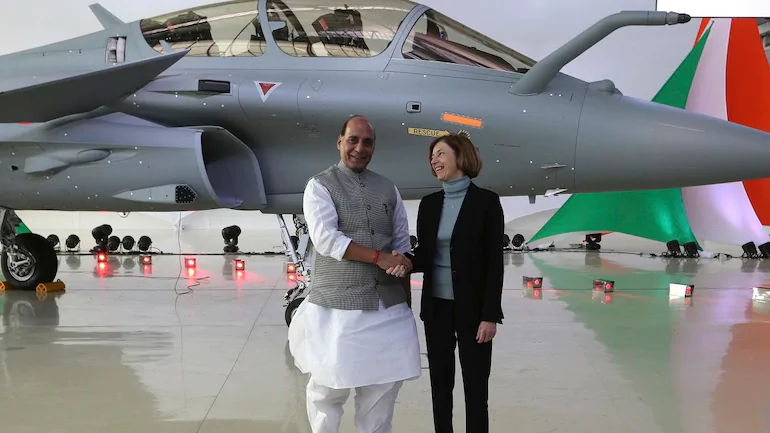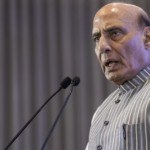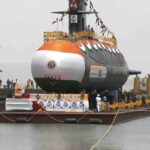
SOURCE: Bharat Karnad
Earlier this month, the Indian Air Force formally inducted five Rafale combat aircraft — two 2-seat trainers, and three combat-ready single seater aircraft, into the 17th ‘Golden Arrows’ Squadron in Ambala. Another five Rafales with IAF roundels are at the Dassault base in Merignac in southern France, being used for conversion of MiG-21bis pilots, ground handling and maintenance crews.
The retraining stints are for six months for each lot of Indian pilots and technicians, with the pilots allotted the contracted number of training sorties alongside a French instructor.
Making allowance for the occasion, there was the expected hyperbole. The defence minister Rajnath Singh called the aircraft a “game changer” and, with less the Chinese adversary in Ladakh in mind than the domestic audience, added that it sent a “big and stern message to the entire world, especially those eyeing our sovereignty.” The French defence minister Florence Parly not to be outshone in exaggeration said that “India has world class capability and incredible sovereign tool. India has an edge over the entire region.” She was merely embroidering what her Indian counterpart had stated in Merignac on 8 October 2019 when formally accepting the first lot of Rafales. After a joy ride in the plane, the Indian leader had declared “the new Rafale Medium Multi-Role Combat Aircraft (MMRCA)” as making “India stronger” and giving the IAF an “exponential boost” to “its air dominance” capability.
Why Rajnathji was briefed to say this is not important. But how the IAF means to actually obtain air dominance with just 36 of these aircraft is a mystery. Sure, Rafales working in tandem with Su-30MKIs can plausibly achieve this objective as former Air Chief Marshal BS Dhanoa stated, but by themselves even twice this number of Rafales in Indian colours cannot. But, as the late defence minister Manohar Parrikar was convinced, larger numbers of Su-30s would alone have sufficed for the purpose. Moreover, the additional Su-30s could have been secured at a fraction of the Rs 59,000 crore upfront cost of the Rafales or, to repeat myself, for just a “truckload” of the exorbitantly-priced Meteor, Scalp and Hammer missiles that these aircraft will be armed with, and which have been tested and proven by the French Air Force against such military heavyweights as Libya and Syria!
This begs the question I long ago asked — where was the need for the Rafale in the first place?
But whether India dominates the skies is not Parly’s interest; that the IAF procures an additional 36 Rafales is. In a meeting with the French press at the embassy that evening, Parly was reportedly confident that Paris will be able to ring up such a sale on the same terms, but without the ‘sunk costs’ of attending infrastructure — airconditioned hangars, special diagnostic and testing machines, etc.
When reminded by a pesky French journo that such a follow-up deal clashes head-on with Prime Minister Narendra Modi’s ‘atm nirbharta’ policy and the thrust of Rajnath Singh’s ‘negative list’ thinking, Madame Parly dissembled but did not budge from her stand, indirectly hinting that such a deal would be signed for the same reason the original was approved in April 2015: Modi will agree to buy ’em. End of argument! Irrelevant considerations like, where’s the money? are obviously not expected to intrude into the Indian government’s calculations, or at least Paris does not expect them to.
Both France and the IAF had gamed this out right, and their plan is working. IAF was the decisive actor here. It had sought the 36 Rafales it was partial to from the beginning as a wedge purchase easing the buy, as I had predicted, of more such aircraft to fill the Service’s entire 126 MMRCA requirement without having to go through the transfer-of- technology and licensed manufacture cycle.






